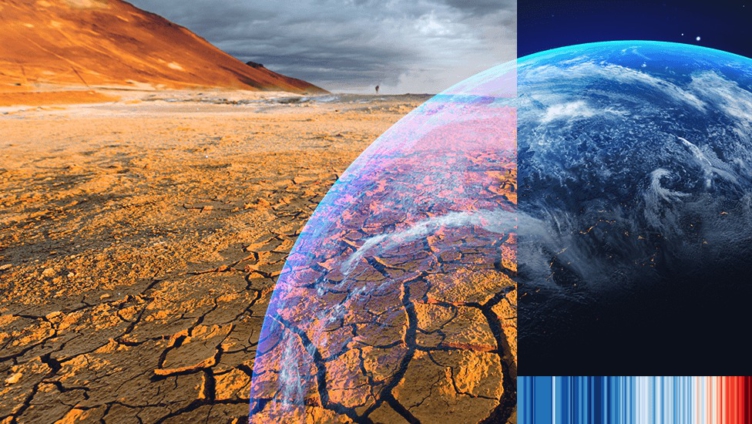A new World Meteorological Organization (WMO) update is warning that an El Niño event may develop in the coming months, following three consecutive years of an unusually stubborn and protracted La Niña that influenced temperature and rainfall patterns around the world.
According to a study published last year by the UK Met Office, the WMO's lead center for annual to decadal climate predictions, there is a 93 percent chance that at least one year until 2026 will be the warmest on record, and a 50:50 chance that the global temperature will temporarily rise to 1.5°C above pre-industrial levels.
Hottest year in three years, 1.5 degrees Celsius to be broken—this could mean unprecedented heat waves and other climate impacts all over the world.
The combination of El Niño and climate change has made 2016 the warmest year on record.
A new regional climate outlook released on February 22 warned that the disastrous situation in the Horn of Africa would worsen because the upcoming March-May rainy season is expected to be poor.
The current La Niña began in September 2020 and will last until the boreal summer of 2021. La Niña is defined as a large-scale cooling of ocean surface temperatures in the central and eastern equatorial Pacific Ocean, which is accompanied by changes in tropical atmospheric circulation. In affected areas, it usually has the opposite effect on weather and climate as El Nino.
WMO says, once the ongoing La Nina event, which is the cooling phase of ENSO and has the opposite effects of El Niño, ends in March, there is a high chance (90%) of neutral conditions in the equatorial Pacific Ocean from March to May.
“The first triple-dip La Niña of the 21st century is finally coming to an end. La Niña’s cooling effect put a temporary brake on rising global temperatures, even though the past eight-year period was the warmest on record. If we do now enter an El Niño phase, this is likely to fuel another spike in global temperatures,” said Prof. Taalas.
El Niño and La Niña are natural occurrences. However, it is occurring against the backdrop of human-caused climate change, which is raising global temperatures, altering seasonal rainfall patterns, and making our weather more extreme.
Both are major – but not the only - drivers of the earth’s climate system.
Experts in Ghana have already issued warnings about the hot and dry conditions that have prevailed in many areas.
According to the Ghana Meteorological Agency's (GMet) harmattan seasonal prediction advisory, there will be dry conditions.
Latest Stories
-
First responsibly mined Ghanaian gold bars presented to Asantehene
22 minutes -
Two notorious robbers jailed for a series of attacks in Wa
35 minutes -
Ofori-Atta must first be arrested before any trial in absentia – OSP clarifies
38 minutes -
OSP declaring Ofori-Atta wanted over bruised ego – Miracles Aboagye
1 hour -
OSP must necessarily be aggressive but presumption of innocence is fundamental – Kofi Bentil
1 hour -
I wouldn’t return to Ghana if I were Ofori-Atta – Miracles Aboagye on OSP case
1 hour -
I won’t advise Ofori-Atta to return to Ghana – Kofi Bentil
1 hour -
OSP has overreached his bounds; I won’t advise Ofori-Atta to return – Kofi Bentil
1 hour -
Declaring people wanted is unconstitutional – Kofi Bentil on OSP vs Ofori-Atta
2 hours -
Cost of living has come down since we assumed power – Kwakye Ofosu
2 hours -
Dumsor Levy: We won’t allow you to gaslight Ghanaians – Miracles Aboagye to Mahama government
2 hours -
NPP’s criminal mismanagement of exchange rate contributed to energy sector debt – Kwakye Ofosu
2 hours -
Mahama government scammed its way to power – Miracles Aboagye on Dumsor Levy
2 hours -
Dumsor Levy ‘more than E-Levy’; NPP’s opposition justified – Kofi Bentil
2 hours -
Dumsor Levy is a betrayal of trust – Miracles Aboagye
2 hours

